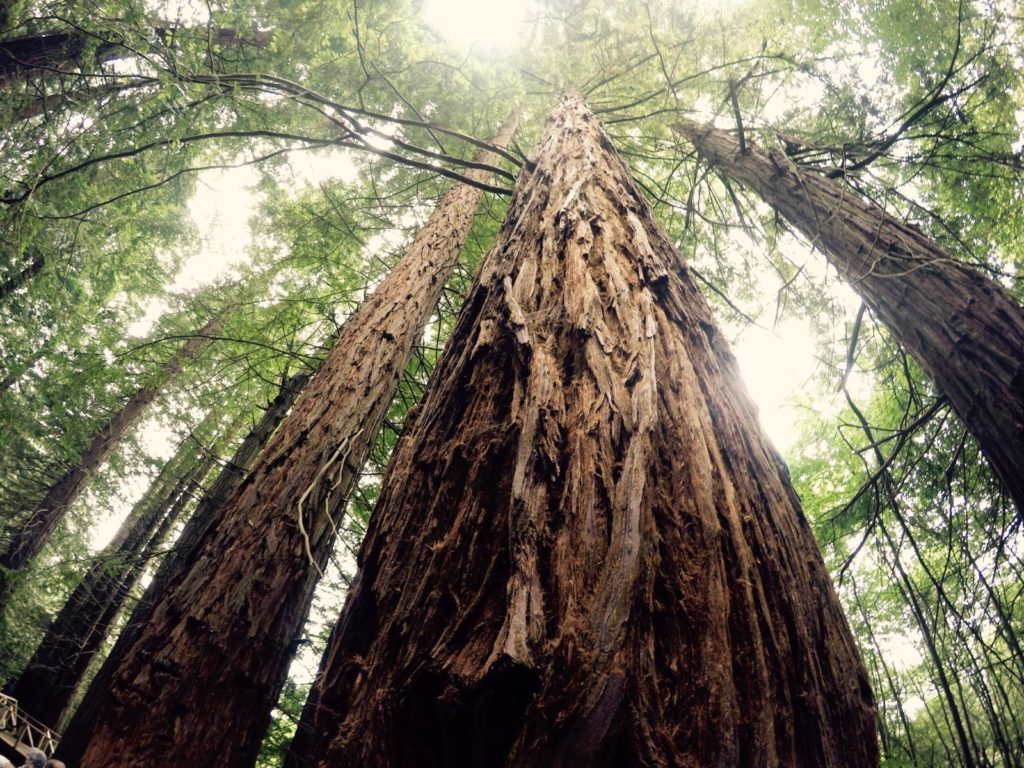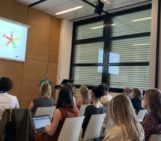
Biodiversity is an essential component of life on Earth and of human society, and is now a primary focus area of the European Union with the EU’s Biodiversity Strategy for 2030 launched in 2020 as part of the European Green Deal. The Biodiversity Strategy has some extremely ambitious targets that will require new legislation and processes in a multitude of different areas that are related to the geosciences. To support EU’s biodiversity goals, the EGU Council has approved Biodiversity as the EGU’s Policy Priority Area for 2022-2024. This month’s Geopolicy Blog post will outline what the EU’s biodiversity targets are, highlight some of the steps that have already been taken to to support these targets, and introduce EGU’s new Policy Priority Area.
Biodiversity refers to the variety of living organisms on Earth, their habitats, and their interactions. It supports our food system, increases community resilience, and underpins more than half of global GDP. Biodiversity is not only vital for natural areas such as forests and wetlands but also essential for the health of freshwater ecosystems, soil systems, and our oceans. This makes the topic of biodiversity incredibly relevant for many different geoscience and policy areas.
The ambitious targets of the EU’s Biodiversity Strategy for 2030
The EU’s Biodiversity Strategy for 2030 is incredibly ambitious and multifaceted with targets stretching over several different policy areas. It aims to increase the EU-wide network of protected areas to 30% for both land and sea, with 10% of each being strictly protected. It includes the EU Forest Strategy for 2030, which aims to plant at least 3 billion trees in the EU by 2030 while protecting, restoring, and ensuring the multifunctionality of EU forests. Furthermore, it aims to improve the health of Europe’s soils and oceans, and restore at least 25,000 km of rivers, floodplains, and wetlands by 2030. You can read more about these initial biodiversity targets and how they relate to the geosciences in the EGU’s 2020 publication, How geoscience can support the European Green Deal.
While all these initial targets sound like quite lofty goals, there are practical steps that EU institutions are taking (or will be taking very soon) to help them become a reality. Some of these steps involve establishing innovative programmes that connect stakeholders and support the implementation of initiatives on an EU Member State level. Another necessary element that EU institutions have begun is the creation and revision of EU legislations and regulations to ensure they promote practices that support biodiversity. Examples of these that relate to the EU Biodiversity Strategy include:
- The creation of a new legal framework on the restoration of healthy ecosystems. In July this year, the European Parliament welcomed the Commission’s commitment to draw up a legislative proposal on the EU nature restoration plan, including on binding restoration targets, ideally with intermediary goals. The proposal is likely to be published in the fourth quarter of 2021 and will be accompanied by an impact assessment.
- The revision of the legislation on marketing of seeds and other plant and forest reproductive material. It is hoped that a revision to this current initiative will better support technical developments, create more sustainable and climate-resilient agri-food systems, and the encourage the conservation of biodiversity and of plant and forest genetic resources. A European Commission Consultation for this revision is planned for the first quarter of 2022.
- A review of the lists of pollutants affecting surface and ground waters and corresponding regulatory standards. This initiative will address some of the shortcomings identified in the recent fitness check of EU water legislation regarding chemical pollution. While it will primarily fall within the EU’s Zero Pollution Action Plan, changes to regulatory standards on surface and ground water pollutants is likely to have an impact on the biodiversity of freshwater ecosystems. This the legislative proposal and related impact assessment are likely to take place in the third quarter of 2022.
Biodiversity and the geosciences
New and updated legislations (such as those listed above) along with all the decisions that policymakers make regarding the EU Biodiversity Strategy should be underpinned and supported by science to ensure that the processes that they use are as effective and successful as possible! Scientific information is collected by policymakers using several different methods. European Commission Consultations are generally the beginning of the EU’s legislation process and allow interested stakeholders to provide expertise, or submit their opinion on a particular topic or policy process via an online questionnaire. European Commission Expert Groups are composed of individuals, organisations, the authorities of EU Member States, and other public entities with the aim to advise the European Commission in relation to the preparation of legislative proposals, programmes, and policies. The Commission, Parliament or Council also often require informal advice from scientists to help them make amendments to policy documents. However, despite these existing science for policy pathways, it can still be difficult for scientists to know exactly when or how their expertise is relevant and can be used!
The EGU is hoping to contribute to specific policies relating to the EU Biodiversity Strategy and provide our members with practical examples about how they can get involved in by identifying a Policy Priority Area, that allows Union Policy activities to focus on biodiversity.
Biodiversity as the EGU’s Policy Priority Area
As Europe’s largest geoscience society, the EGU is uniquely positioned to facilitate the transfer of knowledge from research into practice and to connect policymakers to the most relevant geoscience experts. The wide spectrum of expertise covered by the EGU meant that, up until now, the Union’s policy activities (such as the EGU’s science-policy pairing scheme and events) have had a broad focus. This enables all EGU divisions to be included in our policy activities but has made it difficult for EGU to give the necessary level of attention to a specific topic required to effectively contribute to related policy and legislation. In October 2020, the EGU Council voted to create a Policy Priority Area, enabling EGU to concentrate on a key area (relevant for both EU policy and the geosciences) and therefore meaningfully contribute to specific EU policies. The activities connected with the EGU’s Policy Priority Area will not detract from or replace the existing support and activities that appeal to all EGU members, but take place in addition to them.
In October 2021, Biodiversity was selected by the EGU Science for Policy Working Group and approved by the EGU Council as the 2022-2024 Policy Priority Area due to its relevance to many EGU divisions, current and future policy relevance, and the need for information and continued scientific support. Many of the issues within the larger biodiversity topic also require an interdisciplinary scientific approach that the EGU is very well positioned to meet. As outlined above, there are many upcoming policy initiatives that will benefit from scientific input. EGU is excited to contribute to these with the help of our members! Keep an eye on the GeoPolicy Blog and EGU website next week for more details about how you can get involved with EGU’s first Policy Priority Area: Biodiversity!





